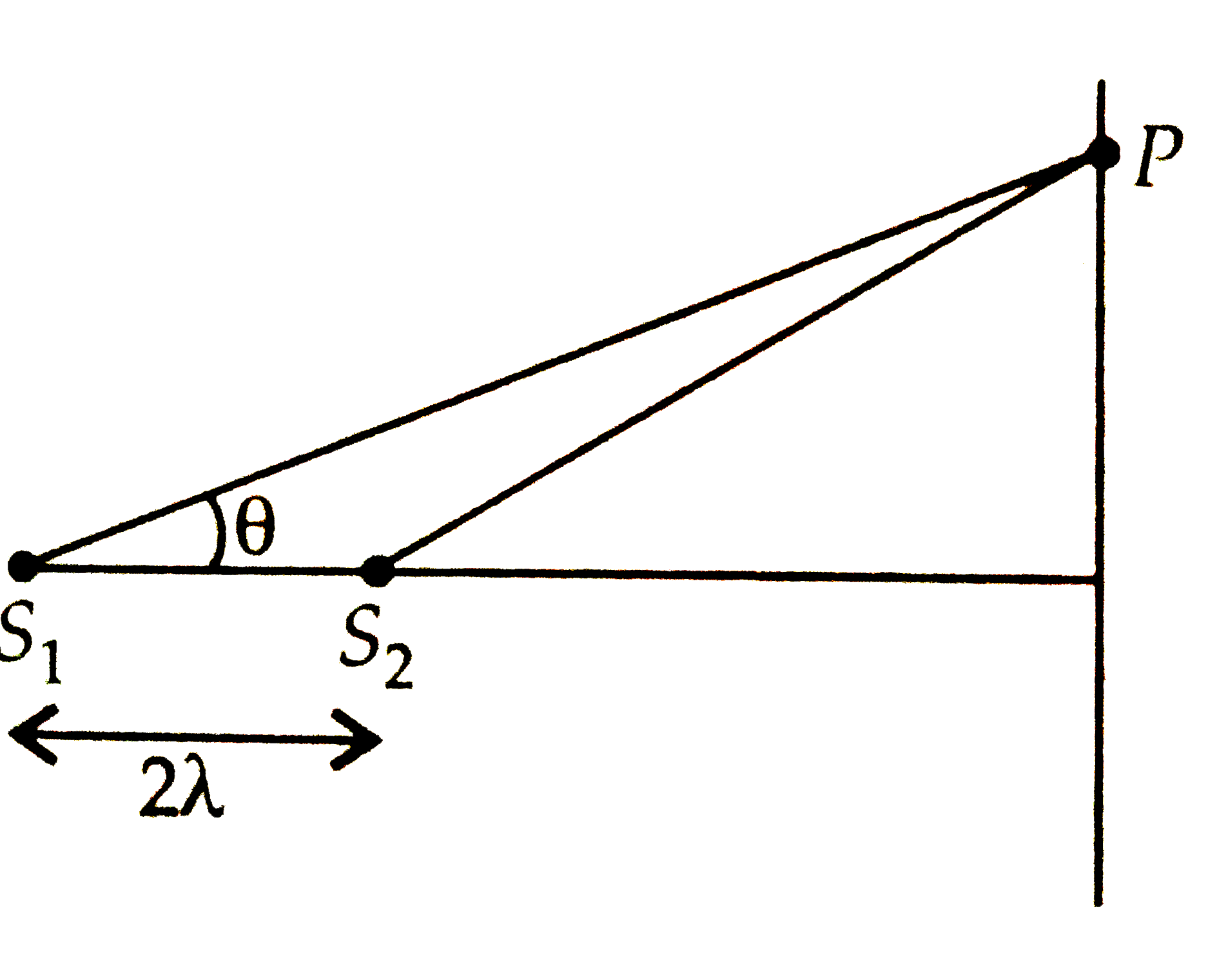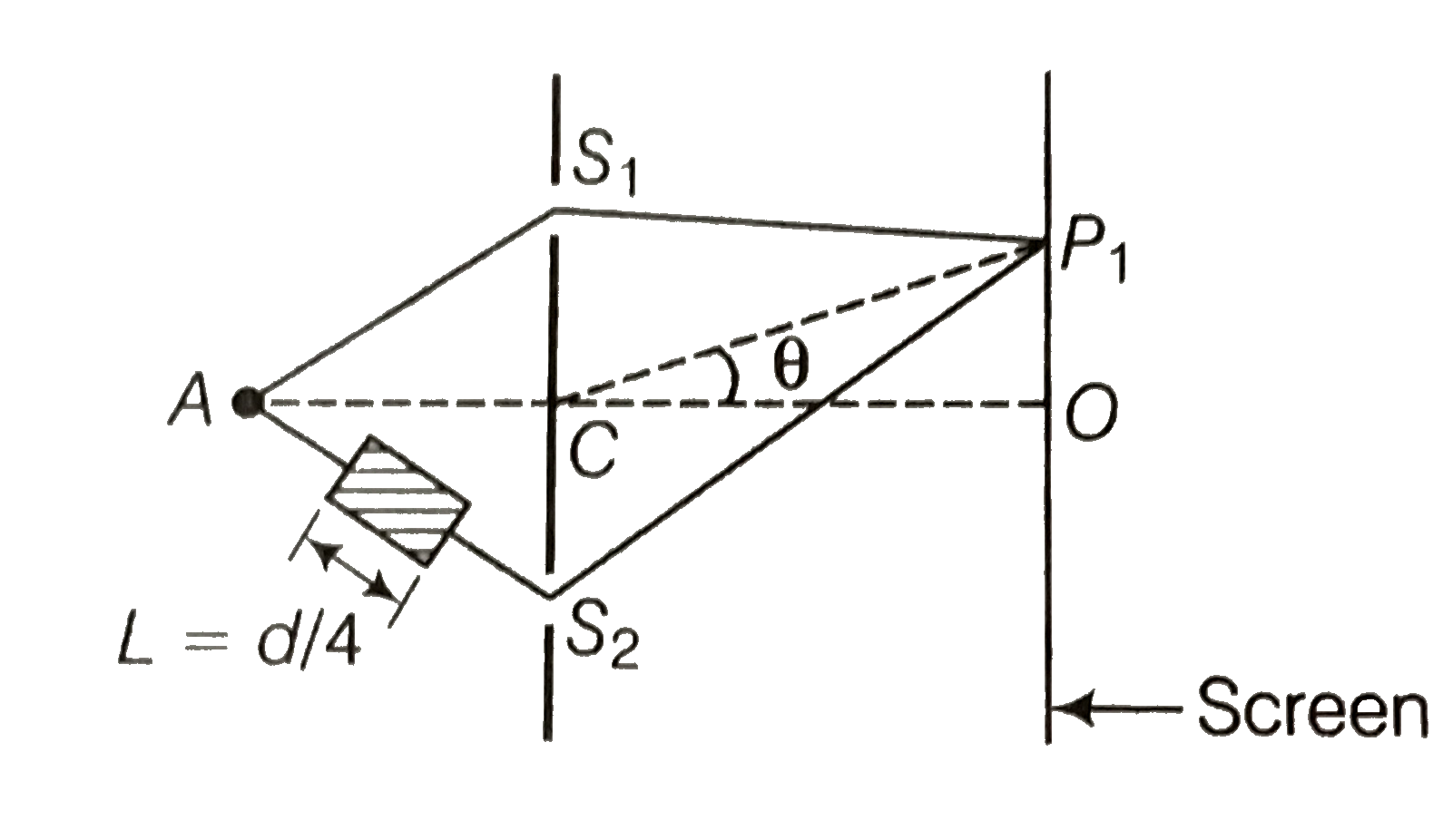Complete Solutions to Interference Of Light Waves And Young'S Experiment of chapter WAVE OPTICS of Class 12 book with complete answers and questions
| Class 12 | PHYSICS |
| Chapter | WAVE OPTICS |
| NCERT FINGERTIPS | Interference Of Light Waves And Young'S Experiment |
| Number Of Questions | 40 |
| Academic Year | 2023-24 |
Consider the following statements in case of Young's double slit experiment.
(1) A slit S is necessary if we use an ordinary extended source of light.
(2) A slit S is not needed if we use an ordinary but well collimated beam of light.
(3) A slit S is not needed if we use a spatially coherent source of light.
Which of the above statements are correct?
View SolutionIn Young's double slit experiment two disturbances arriving at a point P have phase difference fo `(pi)/(3)`. The intensity of this point expressed as a fraction of maximum intensity `I_(0)` is
View SolutionIn young's double slit experiment using monochromatic light of wavelengths `lambda`, the intensity of light at a point on the screen with path difference `lambda` is M units. The intensity of light at a point where path difference is `lambda//3` is
View SolutionIn Young's double slit experiment, the slits are horizontal. The intensity at a point P as shown in figure is `(3)/(4) I_(0)`,where`I_(0)` is the maximum intensity.
Then the value of `theta` is,
(Given the distance between the two slits `S_(1)` and `S_(2)` is `2 lambda`)

View SolutionTwo slits in Young's double slit experiment have widths in the ratio 81:1. What is the the ratio of amplitudes of light waves coming from them ?
View SolutionThe intensity ratio of the maxima and minima in an interference pattern produced by two coherent sources of light is `9:1.` The intensities of the used light sources are in ratio
View SolutionThe two coherent sources with intensity ratio `beta` produce interference. The fringe visibility will be
View SolutionThe ratio of intensity at maxima and minima in the interference pattern is 25:9. What will be the widths of the two slits in Young's interference experiment ?
View SolutionIn Young's double slit experiment, one of the slit is wider than other, so that amplitude of the light from one slit is double of that from other slit. If `I_m` be the maximum intensity, the resultant intensity I when they interfere at phase difference `phi` is given by:
View SolutionIn a Young's double-slit experiment , the slits are separated by `0.28` mm and screen is placed `1.4` m away . The distance between the central bright fringe and the fourth bright fringe is measured to be `1.2` cm . Determine the wavelength of light used in the experiment .
View SolutionThe slits in Young's double slit experiment are illuminated by light of wavelength 6000 Ã…. If the path difference at the central bright fright fringe is zero, what is the path difference for light from the slits at the fourth bright frings?
View SolutionIn a double slit experiment, the distance between the slits is d. The screen is at a distance D from the slits. If a bright fringe is formed opposite to one of the slits, its order is
View SolutionIn Young's double slit experiment, the `10^(th)` maximum of wavelength `lambda_(1)` is at a distance `y_(1)` from its central maximum and the `5^(th)` maximum of wavelength `lambda_(2)` is at a distance `y_(2)` from its central maximum. The ratio `y_(1)//y_(2)` will be
View SolutionA narrow slit of width 2 mm is illuminated by monochromatic light fo wavelength 500nm. The distance between the first minima on either side on a screen at a distance of 1 m is
View SolutionThe two slits are 1 mm apart from each other and illuminated with a light of wavelength `5xx10^(-7)` m. If the distance of the screen is 1 m from the slits, then the distance between third dark fringe and fifth bright fringe is
View SolutionYoung's experiment is performed with light of wavelength 6000 Ã… wherein 16 fringes occupy a certain region on the screen. If 24 frings occupy the same region with another light of wavelength `lambda`, then `lambda` is
View SolutionTwo sources of light of wavelength 2500 Ã… and 3500 Ã… are used in Young's double slit experiment simultaneously. Which orders of fringes of two wavelength patterns coincide?
View SolutionA Young's double slit experiment uses a monochromatic source. The shape of the interference fringes formed on a screen is
View SolutionWhen interference of light takes place
View SolutionTwo slits are made one millimeter apart and the screen is placed one metre away. When blue-green light of wavelength 500 nm is used, the fringe separation is
View SolutionIn Young's double slit experiment , light waves of `lambda = 5.4 xx 10^(2)` nm and `lambda = 6.85 xx 10^(1)` nm are used in turn , keeping the same geometry of the set up . Calculate the ratio of the fringe widths in the two cases .
View SolutionThe fringe width in YDSE is `2.4 xx 10^(-4)m`, when red light of wavelength `6400 Å` is used. By how much will it change, if blue light of wavelength `4000 Å` is used ?
View SolutionIn a double slit experiment, the distance between slits in increased ten times whereas their distance from screen is halved then the fringe width is
View SolutionYellow light of wavelength 6000 Ã… produces fringes of width 0.8 mm in Young's double slit experiment. If the source is replaced by another monochromatic source of wavelength 7500 Ã… and the separation between the slits is doubled then the fringe width becomes
View Solution
A small transparent slab containing material of `mu=1.5` is placed along `AS_(2)`(figure). What will be the distance from O of the principle maxima and of the first minima on either side of the principal maxima obtained in the absence of the glass slab ?
View SolutionInterference fringes were produced in Young's double slit experiment using light of wavelength 5000 Ã…. When a film of material `2.5xx 10^(-3) cm` thick was placed over one of the slits, the fringe pattern shifted by a distance equal to 20 fringe widths. The refractive index of the material of the film is
View SolutionIn a two-slit experiment with monochromatic light, fringes are obtained on a screen placed at some distance from the slits. If the screen is moved by `5xx10^(-2)` m towards the slits, the change in fringe width is `3xx10^(-5)`. If the distance between the slits is `10^(-3)`m, calculate the wavelength of the light used.
View SolutionIn a Young's double slit experiment an electron beam is used to obtain interference pattern. If the speed of electron decreases then
View SolutionIn a double slit interference pattern, the first maxima for infrared light would be
View SolutionIn double slit experiment using light of wavelength `600 nm`, the angular width of a fringe formed on a distant screen is `0.1^(@)`. What is the spacing between the two slits ?
View SolutionIn Young's double slit experiment, the distance between two sources is `0.1mm`. The distance of screen from the sources is `20cm`. Wavelength of light used is `5460Å`. Then angular position of the first dark fringe is
View SolutionIn a double slit experiment the angular width of a fringe is found to be `0.2^(@)` on a screen placed I m away. The wavelength of light used in 600 nm. What will be the angular width of the fringe if the entire experimental apparatus is immersed in water ? Take refractive index of water to be `4//3`.
View SolutionIn a Young's double slit esperiment, the angular width of a fringe formed on a distant screen is `1^(@)` . The slit separation is 0.01 mm. The wavelength of the light is
View SolutionIn a Young's double slit experiment, let `S_(1)` and `S_(2)` be the two slits, and C be the centre of the screen. If `angle S_(1)CS_(2)=theta` and `lambda` is the wavelength, the fringe width will be
View SolutionIn a Young's double slit experiment, (slit distance d) monochromatic light of wavelength `lambda` is used and the fringe pattern observed at a distance D from the slits. The angular position of the bright fringes are
View SolutionIn Young's double slit experiment, the fringe width with light of wavelength 6000 Ã… is 3 mm. The fringe width, when the wavelength of light is changed to 4000 Ã… is
View SolutionThe colours seen in the reflected white light from a thin oil film are due to
View SolutionWhat is the minimum thickness of a soap bubble needed for constructive interference in reflected light, if the light incident on the film is 750 nm? Assume that the refractive index for the film is `n=1.33`
View SolutionA parallel beam of sodium light of wavelength `6000 Å` is incident on a thin glass plate of `mu=1.5`, such that the angle of refraction in the plate is `60^(@)`. The smallest thickness of the plate which will make it appear dark by reflected light is
View SolutionOn introducing a thin film in the path of one of the two interfering beam, the central fringe will shift by one fringe width. If `mu=1.5,` the thickness of the film is (wavelength of monochromatic light is `lambda`)
View Solution
Interference Of Light Waves And Young'S Experiment questions and complete solutions for chapter WAVE OPTICS of MTG PHYSICS (ENGLISH) of Class 12
All Exercises from NCERT FINGERTIPS Class 12 PHYSICS WAVE OPTICS
- ASSERTION & REASON CORNER
- Assertion And Reason
- Coherent And Incoherent Addition Of Waves
- Diffraction
- HIGHER ORDER THINKING SKILLS
- Huygens Principle
- Interference Of Light Waves And Young'S Experiment
- MCQs CORNER
- NCERT Exemplar
- NCERT EXEMPLAR PROBLEMS
- Polarisation
- Refraction And Reflection Of A Plane Waves Using Huygens Experiment